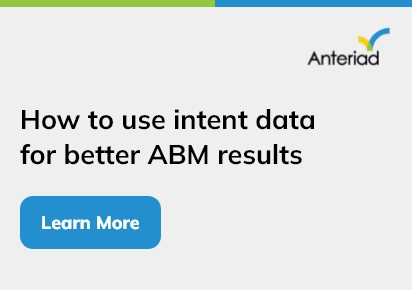Cloud adoption is skyrocketing. From remote work to digital transformation, businesses are migrating workloads to the cloud at record speed. But this shift has also opened the door to new cyber risks, making cloud security services a top priority for organizations worldwide.
For providers of cybersecurity solutions, this creates both an opportunity and a challenge. The opportunity? Demand has never been higher. The challenge? Competition is fierce, and reaching the right buyers at the right time is harder than ever.
That’s where intent based targeting comes in. By leveraging buyer intent signals, cloud security providers can zero in on prospects actively researching solutions, improving demand generation and accelerating deal cycles.
Also Read: 10 ML Applications in B2B Intent Data for Smarter Marketing
What is Intent Based Targeting?
Intent based targeting is a data-driven approach to marketing that focuses on accounts showing real purchase intent. Instead of relying only on firmographics like company size or industry, marketers track behavioral signals such as:
- Searching for “best cloud security services” or “cyber security provider for enterprise”
- Downloading a whitepaper on cloud compliance
- Attending a webinar about new cybersecurity technologies
- Comparing vendors of cloud cybersecurity solutions
These digital footprints reveal when a company is moving from awareness to consideration—and that’s the sweet spot for outreach.
Why It Matters in Cloud Security Marketing
Cloud security is now mission-critical
Every sector—from finance to healthcare—is adopting the cloud. As a result, demand for cloud security services has surged. But the noise in the market makes it harder for providers to stand out. Intent based targeting ensures marketing budgets focus on accounts that are already in-market, not wasting resources on cold leads.
Sales cycles are long and complex
Choosing a cybersecurity provider involves multiple decision-makers and extended evaluations. Intent based targeting helps shorten the cycle by flagging the right accounts earlier, allowing sales teams to prioritize high-intent opportunities and engage them with tailored solutions.
Alignment between sales and marketing
Too often, sales teams complain about “bad leads.” With intent data, both sales and marketing share visibility into the same high-priority accounts. This alignment improves conversion rates and creates a smoother buyer journey.
5 Ways Intent Based Targeting Improves Demand for Cloud Security Services
1. Smarter Segmentation
Instead of casting a wide net, intent based targeting lets providers segment audiences by specific interests and signals. For example, an IT director searching “cloud data protection for healthcare” can be placed into a healthcare-specific campaign, improving relevance and response rates.
2. Personalized Messaging at Scale
Intent data reveals what topics prospects care about most. A company exploring “cloud cybersecurity compliance” needs very different messaging than one researching “cyber security technologies for hybrid cloud.” Personalized messaging makes outreach more impactful and positions your brand as a trusted advisor.
3. Stronger Content Strategies
By analyzing trending searches and topics, providers can create content that speaks directly to buyer pain points. For instance, if data shows a spike in interest around “AI-powered cloud security services,” creating blogs, case studies, or guides on this topic will draw more qualified traffic.
4. Enhanced Account-Based Marketing (ABM)
For enterprise accounts, ABM and intent based targeting are a perfect match. Providers can identify which high-value accounts are showing intent, then build hyper-personalized campaigns with custom content, ads, and outreach aligned to their journey.
5. Better ROI and Less Waste
Generic ad campaigns often waste money on uninterested audiences. Intent based targeting reduces this by focusing spend only on accounts actively considering cyber security solutions, resulting in higher lead-to-opportunity conversion rates and measurable ROI.
Real-World Impact
Imagine a cloud security provider targeting mid-sized financial firms. Traditional campaigns might reach hundreds of companies, but only a handful are actually researching cybersecurity solutions. With intent based targeting, the provider identifies which accounts are actively reading about “cloud compliance for financial institutions” and delivers tailored campaigns.
The result? More meaningful engagement, faster deal progression, and a stronger competitive position against other cybersecurity providers.
Looking Ahead
The future of B2B marketing lies in precision. As competition in cybersecurity intensifies, relying on broad campaigns will no longer be enough. Intent based targeting offers cloud security providers the ability to engage buyers when it matters most, with personalized, data-driven strategies that improve both demand generation and conversion.
In conclusion, for providers of cloud security services, intent data isn’t just a marketing tool—it’s the engine that fuels growth in a crowded, fast-moving market.



